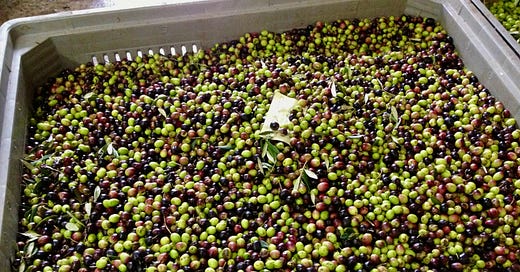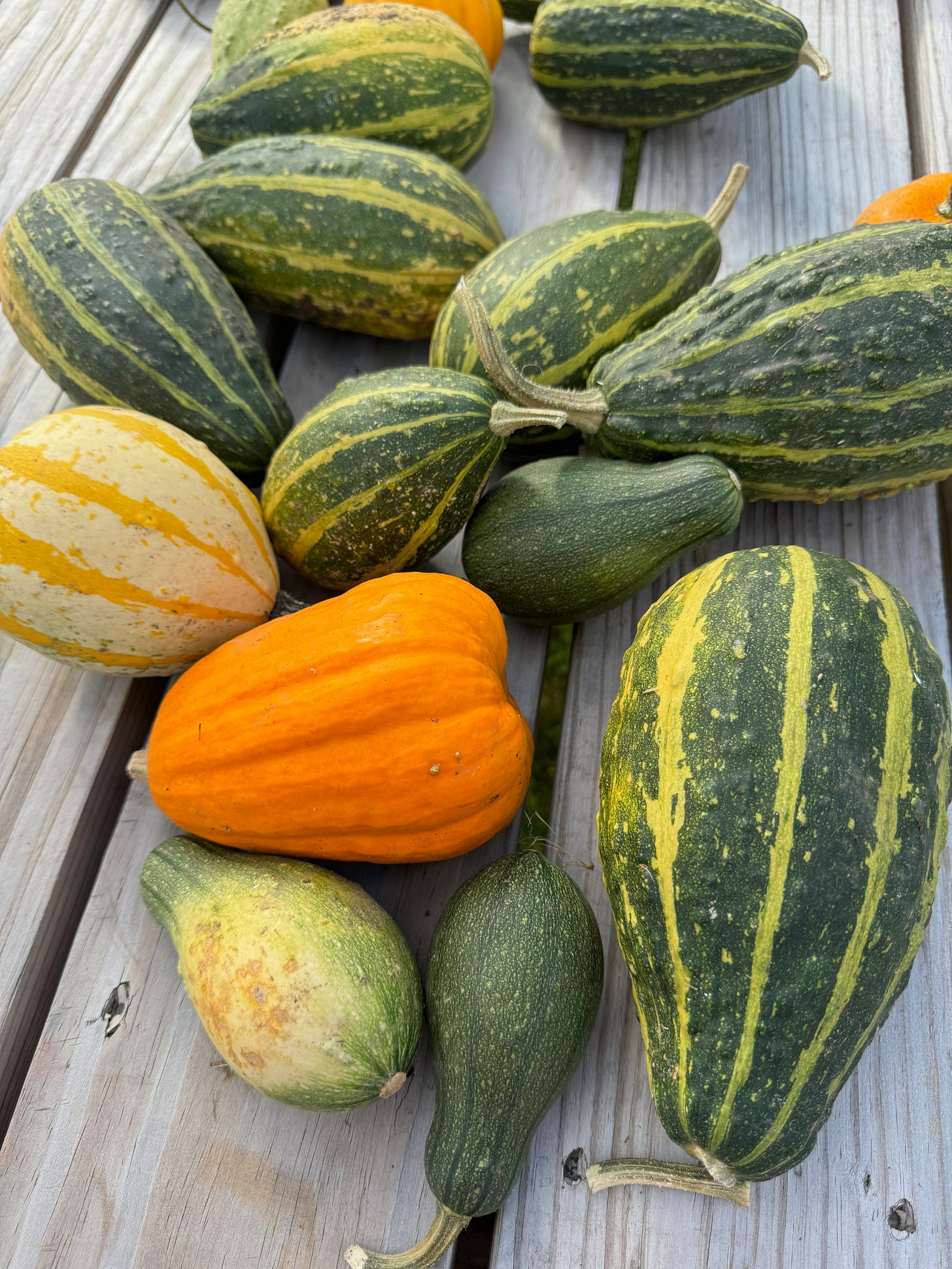New Olive Oil
Last week was a rough one in Maine, tempered only by the news from Tuscany of another bountiful olive harvest on our mini-farm in the mountains behind Cortona. It was a record, in fact, with more than a hundred liters of good oil—a record to be grateful for, but perhaps not unexpected since the trees I planted in 1998 are now, finally, mature. The first bottles (tins, to be exact) will be arriving shortly, inshallah, and I cannot wait for the first taste of new oil.
Meanwhile, for those in my Maine neighborhood, I’m doing a tasting of olive oils at Dot’s Market and Cafe at Lincolnville Beach, Sunday afternoon, the 12th of November. Dot’s is Susie Barnes’s exemplary shop full of culinary delights, including fresh new oil from Susie’s sister Lauren whose place is not far from where my family lives in Tuscany. The olive oil tasting will be part of a pre-Thanksgiving wine tasting, so put it on your agenda if you’re in the Midcoast Maine area. Stop in and say hello—and I’ll answer all your olive oil questions with the facts!
Guns & People
But it was a rough week—you’d have to have been on the moon not to know that here in Maine we experienced the worst (in the sense of the largest) mass killing this year in the entire United States. We Mainers are so not accustomed to this. We think of ourselves as the civilized corner of the U.S., the place where such old-fashioned values as a sense of community, of courtesy and care for your neighbors, still hold true. And we extend that care to the most troubled members of our great big small town. So when one of our own becomes a threat to himself and to others, we like to think we step in and prevent bad things from happening. Only this time we didn’t. How, we are now asking ourselves, did we let this happen?
There are no easy answers, although the most plausible one, easy access to assault weapons, is not comfortable for far too many. In a community where, I’m told, 48% of adults live in homes with at least one gun present, the question is fraught. From my point of view, I just don’t get it. I’ve written in the past about the rigid protocols my grandson had to follow to get his Maine driving license after his 16th birthday. Surely similar protocols should regulate who gets to own and shoot a gun. But no, that’s not the case. And that, I submit, is a big part of the problem.
October Moon
But it was also the week of the Hunter’s Moon, that great gilded orb that brightens every corner of the night and signifies, far more than the equinox, the end of summer. Here in the Northeast, it’s time to clean up the gardens and harvest the last crops, especially any kind of leafy green things. I learned years ago from my Tuscan neighbors to plant and harvest leafy things when the moon is full, and rooty, bulby, underground things (potatoes, carrots, turnips, onions) at the dark of the moon. That’s not just an old wives’ tale, it actually makes sense when you stop to think about it. Leafy green things, whether cabbages or corn, train themselves upward into the light, growing best when the light is strongest (full moon in June), while the root vegetables secrete themselves underground in darkness, drawing the plant’s sugars down into their earthen retreat. This goes for all growing things: years ago, in a recently revamped farmhouse in our mountain community, woodworms were chomping away at the newly installed beams, leaving their telltale tracks along the edges. The old folks shook their heads with a universal tsk-tsk: “Cut at the wrong time,” they said, “should have waited till January when the moon was dark.” In other words, by not observing that caution, the loggers, whoever they were, had cut the timbers when they were full of bugs—probably at the full moon in summer. Had they waited, the wood would have been sound.
So, in the gloriously golden late-summer light, with the moon adding its significant quotient, I harvested the last of the basil, the oregano, and the sage leaves, and cut a bunch of thyme. The basil gets turned into late-season pesto and frozen but the rest are hung from a beam in the barn, along with the garlic that was harvested in July, to add their fragrance to soups and stews and sauces throughout the winter.
Growing Olives, Making Oil
The following content is for paid subscribers only. Please consider becoming a paid subscriber to see all posts.
Keep reading with a 7-day free trial
Subscribe to On the Kitchen Porch to keep reading this post and get 7 days of free access to the full post archives.





